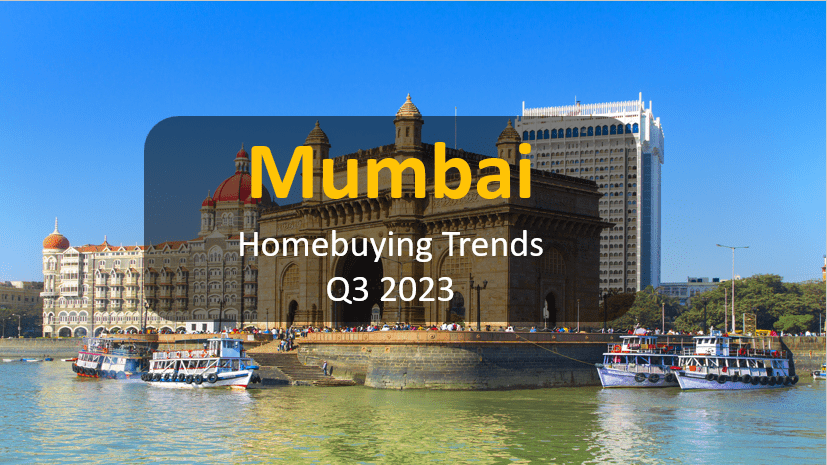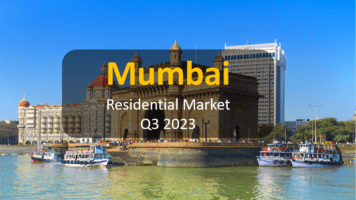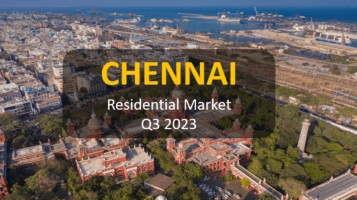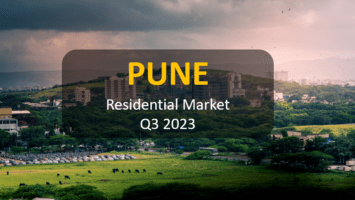Mumbai’s residential real estate sector demonstrated consistent growth in 2023, driven by various factors shaping the preferences of prospective homebuyers. The city’s advantageous combination of economic opportunities, diverse housing options, and strong connectivity positions it as the preferred choice for both homebuyers and investors. Mumbai’s reputation for providing a dynamic urban lifestyle along with promising growth prospects further strengthens its status as a prime destination for real estate investment and homeownership.
Holding a significant position among the top eight cities in the country, Mumbai contributed the largest share, accounting for 30 percent of overall sales and 29 percent of the total number of new residential units launched in the third quarter of the year.
Which Localities Saw the Maximum Number of New Home Launches and Sales?
With the city continuing to expand due to limited land availability in suburban areas, a significant portion of the new supply during this period was focused on the peripheral micro-markets of Nerul, Dombivali, and Panvel. Interestingly, the highest number of sales was observed in nearly the same markets, encompassing Dombivali and Panvel, besides Thane West.
Over the years, these localities have undergone an impressive transformation, evolving into vibrant and highly desirable residential areas. Their strategic positioning, well-established infrastructure, and outstanding connectivity to the central parts of the city and surrounding suburbs have been pivotal in elevating their prominence. They also provide a desirable lifestyle to the discerning buyer, providing access to contemporary facilities such as educational institutions, healthcare services, retail and recreational areas. Thus, for both homebuyers and investors, these residential hubs are unquestionably worth exploring as a prudent investment in Mumbai’s real estate landscape. Presently, while residential properties in Thane West are quoted at around INR 11,000/sqft to INR 12,000/sqft, the average prices in Dombivali and Panvel are pegged at approximately INR 6,000/sqft and INR 7,000/sqft respectively. Nerul, on the other hand, has residential prices hovering around INR 14,000/sqft and INR 15,000/sqft.
Identifying The Preferred Unit Configuration of Homes and The Budget Categories
There was a nuanced distribution of new property launches witnessed across different price ranges during the third quarter of 2023.
Interestingly, majority of the new supply, a notable 39 percent, was concentrated in the INR 25-45 lakh budget category, followed by residential units in the budget range of INR 1 Cr and above. The substantial share of homes in the lower budget category can be attributed to the significant presence of smaller homes, specifically 1 BHK units, which constituted an impressive 51 percent share of the total new supply.
In sharp contrast, homes priced at INR 1 Crore and above dominated buyer preferences, comprising a noteworthy 30 percent of the total units sold during this period. Following closely, residences in the INR 25 lakh-45 lakh price range secured the second position in popularity, accounting for a substantial 22 percent share of the total units sold. This indicates diverse demand, with a significant portion seeking slightly pricier 2 BHK homes in preferred city neighbourhoods, while others prioritize smaller homes and affordability in farther suburban and peripheral areas. Given Mumbai’s soaring residential prices, around 52 percent of homes sold during Q3 2023 were 1 BHK apartments, while 2 BHK apartments formed a formidable 35 percent share of the total residential sales.
Summing up
Thus, to conclude, the residential market in Mumbai has continued its growth trajectory consistently, emphasizing its significant role in the national sales and new supply scenario. Going forward, developers and stakeholders can capitalize on market growth by aligning their offerings and strategies with emerging buyer preferences. As Mumbai's real estate landscape prepares for further expansion, industry stakeholders attentive to these trends are likely to make informed decisions, thereby contributing to the city's ongoing development.











